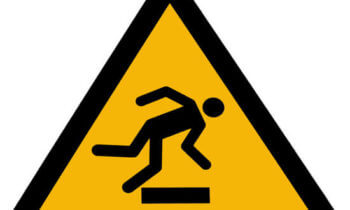Before we start, let’s get one thing straight. THERE ARE MANY WAYS TO LOSE WEIGHT!
We are not saying this is the only way, or even the best way to lose weight. However, it is a good way, if done properly.
 Where did the Low Carbohydrate Diet come from?
Where did the Low Carbohydrate Diet come from?
The person generally noted for pioneering the low-carb diet was a physician and cardiologist named Dr. Robert C. Atkins. He wrote the book Dr. Atkins’ Diet Revolution in 1972, and people have been following and tweaking the diet ever since.
Now I realize there are many so-called low-carb diets. But for brevity’s sake let’s take a look at where it all began.
Here is a direct quote from the Atkins Website
Dr. Atkins, a well-known cardiologist, limited his patients’ intake of sugar and carbohydrates. As a result, many of his patients successfully lost weight and kept it off – even though they had previously been unsuccessful on regular low-calorie diets!
The key was understanding that everyone’s metabolism can use two different types of fuel for energy – either sugar (and carbs that are quickly turned into sugar by the body), or fat. But the type of fuel you burn can have a big difference in losing or maintaining weight. A typical diet reduces calories, but is still high in carbohydrates (and thus sugar). As a result, many people constantly cycle between sugar “highs” (where excess sugar is actually stored as fat in the body) and sugar “lows” (where you feel fatigued and ravenously hungry – for more carbs and sugar). For many, it’s really hard to lose weight that way.
Atkins, on the other hand, limits carbohydrates (sugar), so the body burns fat, including body fat, for fuel. This approach leaves the body steadily fueled, and weight is lost, even when more calories are being consumed. Steady fueling also means more constant energy levels all day long, and less hunger and cravings! You can actually lose weight while feeling full! The science behind the Atkins principles has been proven by over 80 clinical studies!
Now no diet is without its detractors, and the Atkins may have been one the most controversial of them all. This is because the diet seems to focus on eating too much food with a high protein/saturated fat content, while ignoring foods high in fiber and its restrictions on grains and certain fruits and vegetables.
I remember when all low-carb diets became a fad in early 2000. It was even said that one in every eleven adults in the U.S. claimed to be on a low-carb diet. I had many friends stuffing huge quantities of steak, bacon, eggs, and cheese into their mouths while totally ignoring fruits, vegetables and grains of any sort.
What is a Low Carbohydrate Diet?
 Now, as mature adults, we all know that anything taken to the extreme is not a good idea. So before we make too many conjectures, let’s take a deeper look into the low-carb diet, by focusing on the granddaddy of them all.
Now, as mature adults, we all know that anything taken to the extreme is not a good idea. So before we make too many conjectures, let’s take a deeper look into the low-carb diet, by focusing on the granddaddy of them all.
Mayo Clinics take on Atkins Low-Carbohydrate Approach.
The main dietary focus of the Atkins Diet is eating the right balance of carbohydrates, protein and fats for optimal weight loss and health. According to the Atkins Diet, obesity and related health problems, such as type 2 diabetes and heart disease, are the fault of the typical low-fat, high-carbohydrate American diet. The Atkins Diet says that you don’t need to avoid fatty cuts of meat or trim off excess fat. Rather, controlling carbs is what’s important.
The Atkins Diet holds that eating too many carbohydrates — especially sugar, white flour and other refined carbs — leads to blood sugar imbalances, weight gain and cardiovascular problems. To that end, the Atkins Diet restricts carbohydrates and encourages eating more protein and fat. However, the Atkins Diet says it is not a high-protein diet.
Like many diet plans, the Atkins Diet continues to evolve. It now encourages eating more high-fiber vegetables, accommodates vegetarian and vegan needs, and addresses health problems that may arise when initially starting a low-carb diet.
Carbohydrates
The Atkins Diet doesn’t require calorie counting or portion control. It does require you to track your carbs, though. It uses a system called net carbs, which is the total carbohydrate content of an item minus its fiber content. For example, a half-cup of raw broccoli has 2.3 grams of total carbs and 1.3 grams of fiber, putting its net carb value at 1 gram.
The Atkins Diet says its approach to carbs will burn off your body’s fat stores, regulate your blood sugar and help you achieve optimal health, while not leaving you feeling hungry or deprived. Once you’re at your goal weight, the Atkins Diet also says it will help you identify your personal carbohydrate tolerance — the number of grams of net carbs you can eat each day without gaining or losing weight.
Exercise
Although the Atkins Diet originally said that exercise wasn’t vital for weight loss, it now acknowledges that exercise is important to weight loss and maintenance, as well as for achieving other health benefits.
 Phases of the Atkins Diet
Phases of the Atkins Diet
The Atkins Diet has four phases. Depending on your weight-loss goals, you can start at any of the first three phases.
- Phase 1: Induction. In this strict phase, you cut out almost all carbohydrates from your diet, eating just 20 grams of net carbs a day, mainly from vegetables. Instead of getting 45 to 65 percent of your daily calories from carbohydrates, as recommended by most nutrition guidelines, you get only about 10 percent. “Foundation” vegetables, such as asparagus, broccoli, celery, cucumber, green beans and peppers, should account for 12-15 grams of your daily net carbs. You should eat protein, such as fish and shellfish, poultry, meat, eggs and cheese, at every meal. You don’t need to restrict oils and fats, but you can’t have most fruits, sugary baked goods, breads, pastas, grains, nuts or alcohol. You should drink eight glasses of water a day. You stay in this phase for at least two weeks, depending on your weight loss.
- Phase 2: Balancing. In this phase, you continue to eat a minimum of 12-15 grams of net carbs as foundation vegetables. You also continue to avoid foods with added sugar. You can slowly add back in some nutrient-rich carbs, such as more vegetables and berries, nuts and seeds, as you continue to lose weight. You stay in this phase until you’re about 10 pounds (4.5 kilograms) from your goal weight.
- Phase 3: Pre-maintenance. In this phase, you continue to gradually increase the range of foods you can eat, including fruits, starchy vegetables and whole grains. You can add about 10 grams of carbs to your diet each week, but you must cut back if your weight loss stops. You stay in this phase until you reach your weight goal.
- Phase 4: Lifetime maintenance. You move into this phase when you reach your goal weight, and then you continue this way of eating for life.
Weight loss
The Atkins Diet says that you can lose 15 pounds (6.8 kilograms) in the first two weeks of phase 1 — but it also acknowledges that those aren’t typical results. The Atkins Diet also acknowledges that you may initially lose water weight. It says that you’ll continue to lose weight in phases 2 and 3 as long as you don’t eat more carbs than your body can tolerate.
Most people can lose weight on almost any diet plan that restricts calories — at least in the short term. Over the long term, though, studies show that low-carb diets like Atkins are no more effective for weight loss than are standard weight-loss diets and that most people regain the weight they lost regardless of diet plan.
However, studies have shown that people who continued to follow diet plans, such as Atkins, for two years did lose an average of nearly 9 pounds (4.1 kilograms) overall. Some studies suggest that it’s not cutting carbs that leads to weight loss with Atkins. Instead, you may shed pounds because your food choices are limited, and you eat less since the extra protein and fat keep you feeling full longer.
Health benefits
The Atkins Diet says that its eating plan can prevent or improve serious health conditions, such as metabolic syndrome, diabetes, high blood pressure and cardiovascular disease. In fact, almost any diet that helps you shed excess weight can reduce or even reverse risks factors for cardiovascular disease and diabetes.
And most weight-loss diets — not just low-carb diets — may improve blood cholesterol or blood sugar levels, at least temporarily. One study showed that people who followed Atkins had improved triglycerides, suggesting better heart health. But there have been no major studies to show whether such benefits hold up for the long term or increase how long you live.
Some health experts believe that eating a large amount of fat and protein from animal sources, as allowed on the Atkins Diet, can increase your risk of heart disease or some cancers. However, it’s not known what risks, if any, the Atkins Diet may pose over the long term because most of the studies about it have lasted for two years or less.
Risks
 The Atkins Diet acknowledges that drastically cutting carbs in the early phase of the program can result in some side effects, including:
The Atkins Diet acknowledges that drastically cutting carbs in the early phase of the program can result in some side effects, including:
- Headache
- Dizziness
- Weakness
- Fatigue
- Constipation
In addition, some very low carb diets restrict carbohydrates so much that they result in nutritional deficiencies or insufficient fiber, which can cause such health problems as constipation, diarrhea and nausea.
Eating carbs that are high fiber, whole grain and nutrient dense can improve the health profile of programs like the Atkins Diet, though. In addition, the Atkins Diet has changed over time to help prevent health problems, and it now recommends taking a small amount of extra salt, along with vitamins or supplements.
It’s also possible that restricting carbohydrates to less than 20 grams a day — the level recommended for phase 1 of the diet — can result in ketosis. Ketosis occurs when you don’t have enough sugar (glucose) for energy, so your body breaks down stored fat, causing ketones to build up in your body. Side effects from ketosis can include nausea, headache, mental fatigue and bad breath.
In addition, the Atkins Diet isn’t appropriate for everyone. For example, the Atkins Diet recommends that you consult your doctor before starting the diet if you take diuretics, insulin or oral diabetes medications. In addition, people with severe kidney disease should not follow the diet, and the weight-loss phases of the diet aren’t suitable for women who are pregnant or breast-feeding.
Low Carbohydrate Diet Conclusion
Remember Low Carbohydrates doesn’t mean All Carbohydrates. We all have to eat something to survive. It seems most of us just eat too much… of everything.
This is why the key to every diet is discipline and making personal adjustments along the way. It is not my contention that only one diet is right, but that there are many diets we could choose from. This is why we will delve into many other ways to lose weight in future articles.



